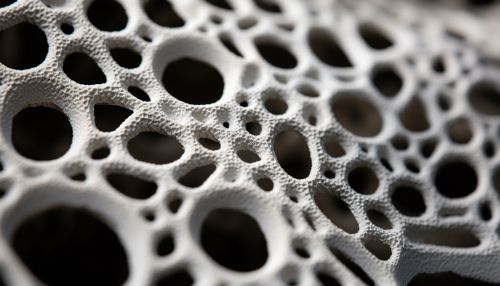The Science of Fluid Dynamics in Porous Media
Introduction
Fluid dynamics in porous media is a branch of fluid dynamics that studies the flow of fluids (liquids and gases) through porous material. The porous material, also known as the porous medium, can be any substance that has tiny spaces or "pores" that can contain fluid.


Fundamentals of Fluid Dynamics in Porous Media
The fundamental principles of fluid dynamics in porous media are based on Darcy's Law, which is an empirical equation proposed by Henry Darcy in the 19th century. Darcy's Law describes the flow of a fluid through a porous medium. The law states that the velocity of fluid flow through a porous medium is directly proportional to the pressure gradient and inversely proportional to the viscosity of the fluid.
The mathematical representation of Darcy's Law is as follows:
Q = -KA (dp/dx)
where: Q = flow rate K = permeability of the porous medium A = cross-sectional area dp/dx = pressure gradient
Permeability and Porosity
Permeability and porosity are two key parameters in the study of fluid dynamics in porous media.
Permeability is a measure of the ability of a porous material to allow fluids to pass through it. It depends on the size and shape of the pores, the connectivity between the pores, and the surface roughness of the pores. Permeability is typically measured in darcies or millidarcies.
Porosity is the measure of the void spaces in a material. It is expressed as a fraction of the total volume of the material. Porosity determines the amount of fluid that a porous material can hold. It is an important parameter in reservoir engineering and hydrogeology.
Mathematical Modeling of Fluid Flow in Porous Media
Mathematical modeling of fluid flow in porous media is essential for predicting the behavior of fluids in various applications. The most common models are based on the Navier-Stokes equations, which describe the motion of fluid substances. However, these equations are often modified to account for the specific characteristics of porous media.
One of the most widely used models is the Brinkman equation, which is a modification of the Navier-Stokes equations. The Brinkman equation includes a term that represents the drag force exerted by the porous medium on the fluid.
Applications of Fluid Dynamics in Porous Media
The study of fluid dynamics in porous media has numerous applications in various fields such as petroleum engineering, hydrogeology, civil engineering, and environmental engineering.
In petroleum engineering, understanding fluid dynamics in porous media is crucial for the extraction of oil and gas from reservoirs. It helps in estimating the amount of recoverable reserves and in designing extraction strategies.
In hydrogeology, fluid dynamics in porous media is used to study groundwater flow. This knowledge is essential for managing water resources, predicting the spread of contaminants, and designing remediation strategies.
In civil engineering, fluid dynamics in porous media is applied in the design of structures such as dams and levees. It is also used in soil mechanics to predict the behavior of soil under various loading conditions.
In environmental engineering, the study of fluid dynamics in porous media is used in waste disposal, pollutant transport, and remediation of contaminated sites.
